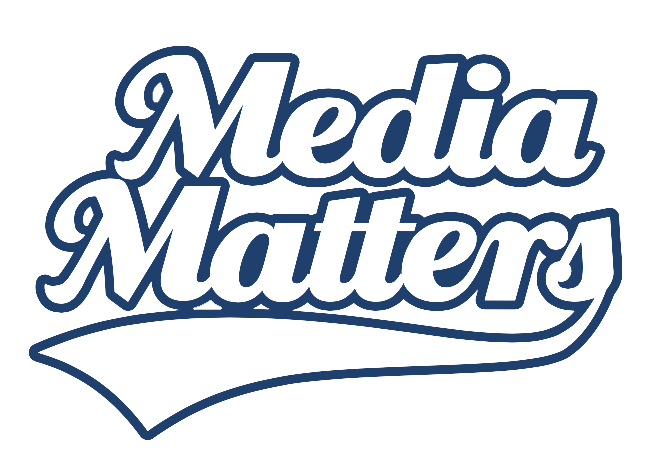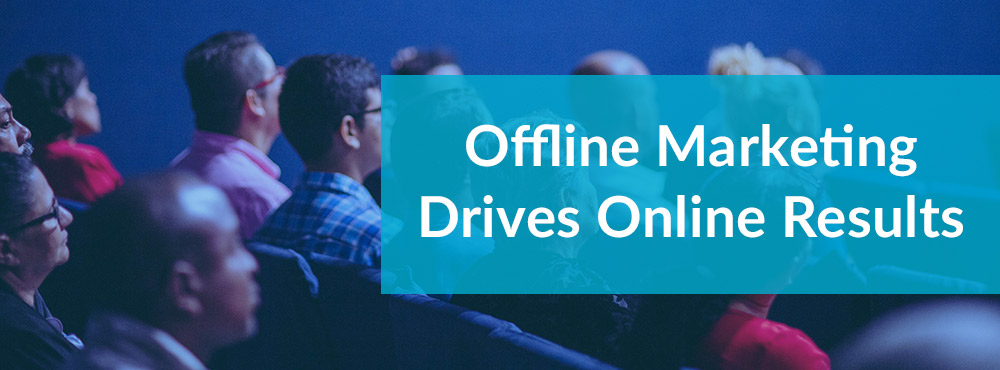Disclaimer: We’d like to clarify that this blog discusses the effectiveness of combining offline marketing with a digital inbound strategy, emphasizing the impact of in-person events. Even though many in-person events have transitioned to the online sphere, they continue to attract the same audiences and achieve significant success. We encourage you to continue reading for more insights.
The digital world is a busy, busy place and, it can be overwhelming. We’re bombarded with messages from the minute we wake up through a variety of channels, which means for a business, it can be hard to cut through the noise.
Which is why, for some of our clients, we have turned our attention to offline marketing alongside their digital strategies – all working towards a positive overarching ROI.
What is offline marketing?
Offline marketing, also known as traditional marketing, refers to any marketing efforts that are not conducted over digital or online channels. It involves promoting a product, service, or brand through various offline mediums and strategies.
What are common offline marketing strategies?
Print Advertising: This includes newspaper ads, magazine ads, brochures, flyers, and direct mail campaigns.
Broadcast Advertising: This involves TV and radio commercials.
Outdoor Advertising: Billboards, posters, transit ads (on buses, subways, taxis), and signage fall under this category.
Events and Sponsorships: Participating in or sponsoring events, trade shows, conferences, and exhibitions.
Telemarketing: Reaching out to potential customers via phone calls.
Direct Marketing: Sending physical materials, such as catalogs or samples, directly to customers.
Public Relations (PR): Managing a company’s image through press releases, media coverage, and other PR activities.
Networking: Building relationships and promoting your business through in-person meetings, such as industry conferences or local business associations.
Guerrilla Marketing: Unconventional and creative marketing tactics that generate buzz and word-of-mouth.
Cold Canvassing: Door-to-door sales or approaching potential customers in person.
Point-of-Purchase (POP) Displays: In-store advertising and promotions, like product displays or signage.
Offline marketing can be effective for reaching specific demographics or local audiences, and it often complements online marketing efforts to create a holistic marketing strategy.
Example of offline marketing driving online results
The specific example here is speaking events. Our client is a global player in the sustainability and renewables sector. The inbound marketing strategy we’ve created for them consists of content marketing, digital PR, email marketing, SEO, social media and paid advertising. The strategy continues to work effectively, producing results that raise brand awareness and consistently generates leads – but we wanted to boost this further.
How could we quickly increase the reach of our client? How could we effectively shine a spotlight onto the level of expertise and experience within the business and highlight the value they offer in front of an engaged audience?
And how could we do all of this without asking for more budget?
Event speaker slots
Event speaker slots are the perfect opportunity for a business to demonstrate their knowledge and expertise on an, often topical, subject. Furthermore, they’re doing so in front of an audience that has actively decided to attend – meaning they are invested in the topic at hand.
This means that you position your business as industry experts and thought leaders to a high volume of prospects, improving brand awareness and giving the company a competitive edge.
The bonus is that offline events will also present opportunities for you to gain online results using several strategies. Here’s a few tips on how you could leverage offline events and speaker slots to maximise your digital results.
Press releases and digital PR
Creating a press release to be sent to industry and trade titles that announces you’re speaking at the event should be high on the task list. The release should contain an image of the speaker and all details of the event, including the discussion topic and its relevance. Don’t forget to include information about other speakers too.
Including a link back to your website will often increase the likelihood of you securing a follow link (a follow link is a valuable tool for referral traffic and SEO. You can learn more about the types of links and why they are important in this follow link to a blog from Moz) . Journalists and writers are busy and don’t want to waste time finding this information when you can provide it for them.
We were able to secure multiple pieces of online coverage and follow links from relevant and authoritative titles as a result of creating and sending a press release about our client’s upcoming speaker slot at a leading event, and within that release, including a link to their website.
Website traffic
During your speaker slot you’ll have wowed your audience with your level of expertise and knowledge, and introduced them to your business, so it’s likely that they’ll look you up online. It’s time for your website to influence them to move into the next stage of the buyer journey.
With this in mind, taking time to make sure your website is in tip-top condition should be high on the priority list.
In the weeks after the event, we saw an increase in branded search terms for our client. Impressions in the search engine results pages increased by 39.44% while the number of total clicks increased by 68%.
We also saw an increase in contact link clicks, whitepaper downloads and newsletter subscriptions following the event.
It’s important to note that resources such as whitepapers and eBooks on your website, introducing an element of data capture, will allow you to move these contacts into a nurture sequence.
Social media
Social media can be an excellent tool for engagement when it comes to events. If you can have a member of the team dedicate time to focus on social media for the duration of your speaker slot, this can yield strong results. Some examples for this client are as follows:
Social engagement on the day of the event increased by 5.3%, impressions the following day increased by 667% and follower count increased by more than 50% vs the previous month.
This was down to a combination of the following tactics:
- Using the event hashtag
- Engaging with other businesses on social platforms that were speaking at the event or the talk itself
- Live tweeting as our client was speaking
Leads and ROI
The conversations that follow your expert talk can directly result in lead generation, so a strong follow-up strategy must be in place. If you have sales collateral that you can send out to leads quickly or information you can link to in your follow-up communication, this can further cement the relationship.
Our client’s expert talk immediately saw them gain three warm leads. Unfortunately, COVID19 hit in the weeks afterwards, impacting the speed at which the leads have progressed. However, the fact that interested parties approached them underpins the impact of the strategy.
Our event only incurred travel costs to our client. We were able to secure the speaker slot for free and include the event marketing as part of the monthly retainer, meaning the ROI would have been high.
Securing speaker slots is certainly a strategy to consider. There is an abundance of webinars and online events that can be just as effective, capturing the attention of your audience and giving you a platform.
If you want to discuss how offline marketing can be a substantial part of an inbound marketing strategy, talk to a member of the team today.





